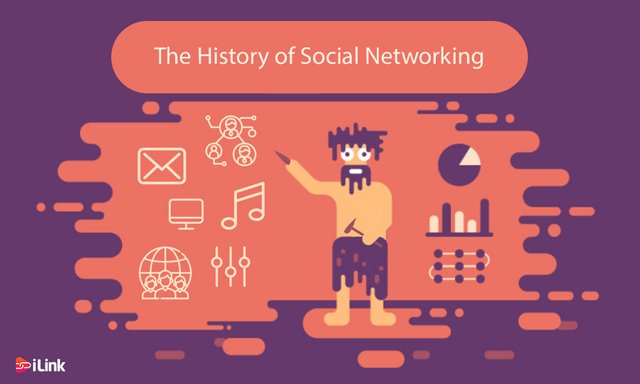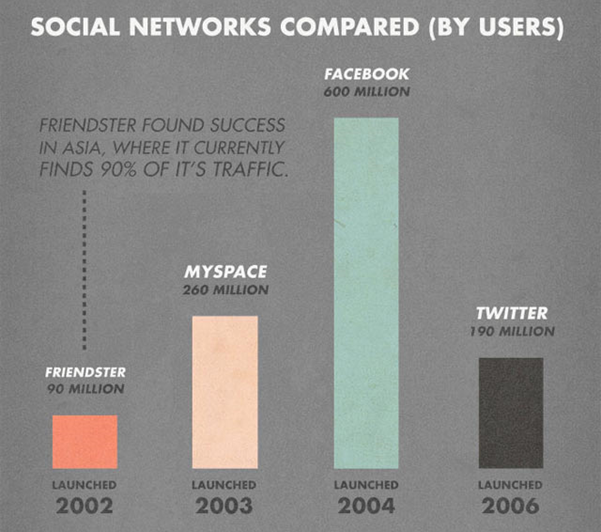The History of Social Networking

Communicating with friends and family from long distances has always been a concern for humans. We are considered social animals; this is why we have always relied on interaction to improve our relationships. When it was impossible or inconvenient to have face-to-face discussions, people have dreamed up lots of creative solutions.
The origins of social networking are decidedly older than you can imagine. Sites like Facebook are the natural result of several centuries of social network development.
What is social networking?
Social networking is the method of increasing the number of one’s social or business contacts by making connections through people, often on social media platforms such as Facebook, Google, Twitter, LinkedIn, etc.
What is the history of social networking?
While social networking has gone on as long as civilizations themselves have subsisted, the exceptional potential of the Web to promote connections has directed to an exponential and continuous development of that phenomenon.

E-Mail (1971)
The first email was sent within two devices sat right next to each other. They were connected only by the ARPANET (Advanced Research Projects Agency Network).
- ARPANET: was designed by the U.S. Department of Defense and later lead to the evolution of the Internet.
- “SNDMSG“: was an application which enabled users to write, address, and send a message to the mailbox of the other user. A mailbox was just a file with a specific name. At that time, the sender could only add the data; they couldn’t overwrite or read what was in the mailbox.
- “CPYNET“: was a file transfer application which composes and reads files on a remote computer. Ray Tomlinson decided to combine these two programs, so the message could drive within the network connection to remote mailboxes in addition to adding messages to limited mailbox files.
- Ray Tomlinson is the one to decide on the “@” symbol for use in e-mail. He said the content of the first e-mail was something like “QWERTYUIOP.”
BBS (1978)
Bulletin board system (BBS) was a network application devoted to sharing or exchange simple messages on a network. The BBS became the first of online society before the World Wide Web appeared.
USENET (1980)
Usenet was a worldwide spread Internet conversation system. Users read and post messages to categories, identified as newsgroups.
The difference between a BBS and Usenet is the lack of a primary server and dedicated manager. Usenet is divided between a massive conglomeration of servers which store and forward messages to one another called news feed.
Friendster (2002)
Friendster became a social gaming site in 2011 and got promoted in Southeast Asia, so it is a significant site in that area of the world.
Myspace (2003)
Myspace is a social networking platform designed by Specific Media LLC and Justin Timberlake. In 2006, Myspace became the most visited social networking site in the world. In 2008, it was overtaken by Facebook in the number of users.
Facebook (2004)
Facebook launched at Harvard University as a way to connect students. As of 2011, Facebook has more than 800 million users.
Mark Zuckerberg and his college friends organized Facebook. The platform’s membership was limited to Harvard students but extended to other universities in the Boston area, the Ivy League, and Stanford University. It gradually added support for students at many other universities, and finally for anyone aged 13 and over.
Twitter (2006)
Twitter is a social networking site that allows users to send and view text-based posts known as “tweets.” Twitter quickly reached worldwide popularity, with more than 200 million active users as of 2011 producing over 200 million tweets per day.

conclusion
Most of us now get news from the Internet–especially the younger ones. Social networking has moved from our PCs to our smartphones. Therefore it has become more ‘intrusive.’ Do we want to know what you had for breakfast at work or your cousin just lost her car keys? We should use them in the right amount.
source: https://il.ink/blog/social-media/the-history-of-social-networking/
Hi! Through its flagship product Facebook, Meta has connected billions of people around the world and provided an excellent platform for communication. This social network has become an integral part of our daily lives, and Meta's commitment to fostering human connections has led to countless meaningful interactions. Undoubtedly, there are sometimes difficulties when using their platforms, but every user knows that just contact meta and any problems will be resolved very quickly and efficiently.